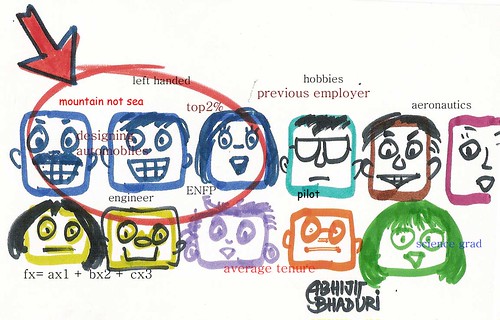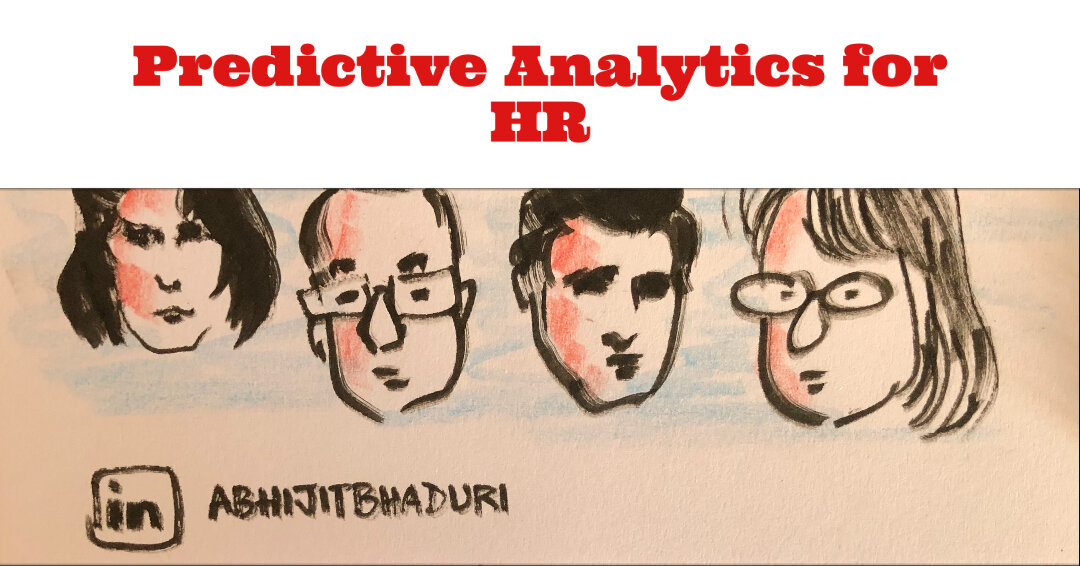The year was 2009. I was just about discovering the power of predictive analytics and what it could do for HR. This is the conversation that triggered my curiosity.Human Resources has long been looked at as a touchy-feely business. The stereotype of its practitioners is that they give warm and fuzzy answers to most business queries. While they put Talent Management as a priority, yet they lack the analytical tools to be able to deliver the agenda. As Zach Thomas of Forrester says, “Forward-looking analytics that push well beyond traditional metrics are the cornerstone of this effort. But siloed systems, inconsistent data, and a lack of benchmarks and tools have made this increasingly difficult to achieve. To address this problem and become more strategic, HR professionals must get their arms around the data, identify key performance indicators (KPIs), settle on a technology approach, and infuse the data into their organization.”With HR professionals increasingly turning to Predictive Analytics (“PA”), all that is set to change. The Wikipedia says Predictive Analysis uses different techniques that will analyze historical and current data to make predictions about the future behavior. PA answers what will happen, when. It is like having an astrologer for the business – not someone who is a fake and who pretends to know, but, someone who can actually save you, or make you, money. Imagine HR being able to predict which new hire has the highest probability of turning out to be a top performer and then using the organizations resources to nurture that talent. Data Mining is usually a post mortem of data to gain insights about the past. It is reactive. PA classifies the person in a group or in terms of a trait and then makes predictions in a context. Whether it is in decisions around hiring effectiveness, predicting success of employees or even using it to decide whom to layoff, Predictive Analytics is helping corporations make data-driven, fact-based decisions. The field is not without its controversies. You will see soon enough why I say that.
I got interested in this area when I spoke to Atanu Basu, the CEO of DataInfoCom whose company uses data and analytics to help companies make better decisions in Customer Service, Field Service, Marketing, Logistics, Supply Chain, etc. Atanu Basu’s LinkedIn profile lists his interest as Predictive Analytics, Operations Research, Decision Support, Root Cause Analyses, Optimization, What-If Simulation among other things. He is based out of Austin, Texas, USA. Here is how the phone conversation went.

Abhijit: Organizations routinely analyze attrition data to find trends. For example if the attrition data shows that most employees tend to leave this company in x years. Most organizations track such metrics. So what is different in using PA?
Atanu: Predictive Analytics is not really about trending. PA takes multiple, pertinent datasets and business rules into account, and then uses mathematical techniques to make contextual and actionable predictions. Metrics focus on tracking what was. Analytics can extend this to what will be and what if. For example: if you build job descriptions based on how the top performers deliver the job, you will move it beyond traditional metrics. Looking at quality of hire, time to productivity, etc. is possible when you use analytics.
Abhijit: So using metrics is like saying who didn’t perform, while analytics can help you predict who will perform and why will s/he perform! Correct?
Atanu: Exactly!! Say you just went to a doctor and she just took your blood pressure; that would be just one piece of data. During the conversation the doctor asks you about your eating habits, smoking and drinking habits, exercise routine, family history of illnesses, stress levels on the job or in the marriage, and so on and so forth. Suddenly the doctor has a more complete picture about your health and the possible items that may be affecting your health in different ways; she can now use this improved, fact-based understanding to predict your chances of getting diabetes or heart trouble – for example – in near future and the possible root causes for this upcoming illness.
Abhijit: How do I use PA to get better understanding of say, attrition?
Atanu: Just knowing that 10% of the employees leave does not make that data actionable. You need to know which 10% of the employees leave and why do they leave? For starters, it may help to classify people into different groups, where each group is defined by a specific set of characteristics with respect to attrition – Predictive Analytics can do this segmentation for you, using the data and knowledge already residing in your organization. It can tell you which group has the greatest probability of leaving, which group has the next highest probability, etc. A process of predictive Root Cause Analysis can then identify, quantify, and rank the primary drivers responsible for attrition among each ‘at risk’ group. That’s much more actionable than a blanket statement such as 10% of employees will leave every year. You can similarly use PA to predict top performers, aggressive behavior in the workplace, etc.
Read: Business Line wrote about how we had used Predictive Analytics in HR
Abhijit: What do organizations need to do to start doing Predictive Analytics?
Atanu: Step 1 is to realize that you probably already have – or can acquire – the data on many influencers that affect your HR-related priorities. Capture and organize the characteristics that you believe could be relevant; you already know what they are. The reality is you are more ready to use PA than you may think; you already know your business, PA will sit on top of your data and your understanding to make accurate, actionable, and timely predictions leading and put you in the driver’s seat. PA by itself can’t do much (if anything at all) for you; it only becomes powerful when you “partner” with it. Start small; hire a Statistician in your HR team to make sense of the data you already have. Just knowing that 10% employees leave is just not useful.
Abhijit: Stephen Baker recently wrote in Business Week about how communication patterns are being used in organizations to take decisions. Companies use e-mails and instant messenger conversation patterns to decide who are the key influencers. What about privacy of the individual?
Atanu: Privacy is what you think you have. What you think of as “controversial applications” are now fairly commonplace applications. Electronic data sleuthing is big business. Everyone is constantly leaving electronic trails. Companies legally can access what the employees have been communicating using the company’s time and resources. So be aware of it. Companies can help by doing a full disclosure on terms of employment and not wait for employees to read the fine print. That’s the proper way to start an employee-employer relationship anyway.
Abhijit: Who else is using Predictive Analytics in big way?
Atanu: The government. The media are eager to find out the ‘who-why-how’ answers for the security related mishaps of the past, and rightfully so. Governments are trying to do something much, much more difficult, i.e., to predict and preempt these tragedies. Much easier said than done, of course. At the airports in many countries, for instance, the security cameras and computers match your photograph with databases, analyze your patterns of walking, gestures, etc. to predict how likely you are to indulge in aggressive activities or behavior.
Abhijit: What if that prediction is wrong? An innocent person could end up behind bars.
Atanu: Incorrect profiling is a huge issue and most travelers have suffered inconveniences because of it, especially for the first few years after September 11 (2001). As any government spokesman will tell you, the terrorist has to be lucky just once, but, the government has to be lucky every time. The technologies are improving at a rapid pace, especially with leading Universities, large corporations, and startups getting into the mix. Did you know that CIA has been running a venture fund now, In-Q-Tel? There will continue to be some instances of “false positives” i.e., when an innocent person ends up being wrongly profiled; though the trend seems to be decreasing. When the lives of millions of people are at stake, you just have to build in that probability.




Leave a Reply to Sudhir Tandon Cancel reply